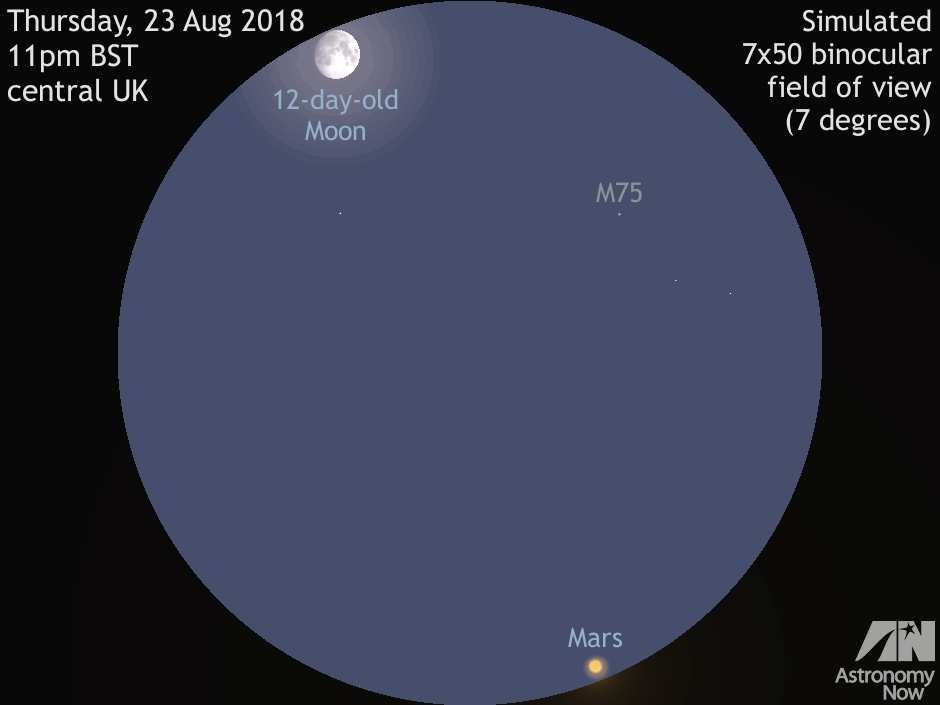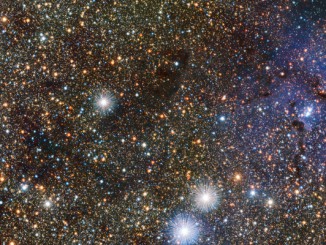
On the night of 23 August 2018 Mars lies in the constellation of Capricornus bordering on Sagittarius, the Red Planet burning with a magnitude -2.3 ochre glow. It lies 63.1 million kilometres (39.2 million miles) distant, hence its 96 percent illuminated gibbous disc spans 22.2 arcseconds in angular size.
The waxing Moon lies 403,900 kilometres (251,000 miles) from the heart of the British Isles at 11pm BST this night, which means that the Red Planet is 156 times farther away. However, the latter only requires a telescope magnifying 80× to enlarge it to the same apparent size as the Moon to the unaided eye.
Telescope owners have a bonus as Messier 75 lies just 3¼ degrees from the Moon tonight, but the magnitude +8.5 globular cluster will be seriously impaired by the lunar glare. If you do manage to locate M75 (also known as NGC 6864), spare a thought that this concentrated ball of stars some 130 light-years in diameter lies at a distance of 67,500 light-years, well beyond the centre of the Galaxy.



